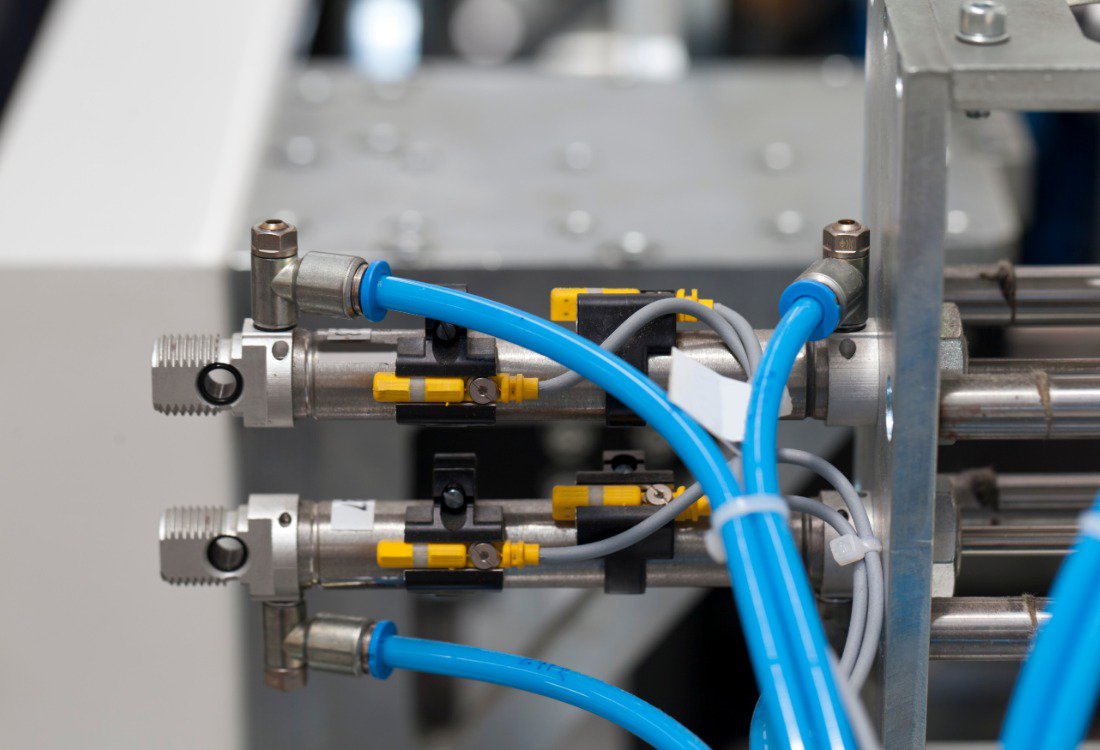When designing or upgrading a pneumatic application, the devil is in the details. It is essential to specify the right components for each function of the application, in order to optimise both performance and safety. Essentially, a well-chosen pneumatic setup gives you a more efficient, reliable, and compliant application aligned with customer-specific requirements.
Luckily, engineers now have access to a vast range of high-quality products, such as Atos pneumatic valves, Festo pneumatic components, and Festo pneumatic fittings, among other choices. In this article, we look at the key factors that engineers should consider when choosing pneumatic components for their systems, helping you narrow down the choice to optimise performance.

Understanding Your Application Requirements
The selection of pneumatic components begins with understanding the specific needs of your application. Different systems function under varying conditions, influenced by factors such as pressure, flow, temperature, and environmental exposure.
1. Operating Environment
Environmental conditions play a major role in determining the type of pneumatic components you need. For instance:
- Temperature: Ensure components can withstand the temperature range in your operating environment. For extreme temperatures, specific materials or coatings may be required.
- Humidity and Moisture: If your system operates outdoors or in areas prone to moisture, consider corrosion-resistant options like stainless steel or additional sealing.
- Cleanliness: Applications used in food processing or pharmaceuticals often require components designed for hygienic operations.
2. Load And Actuation Requirements
Identify the load your system needs to handle and the actuation type required for the application. Pneumatic systems are widely used for actuating cylinders, control valves, and other mechanical devices. The force needed will influence the selection of components like actuators and valves. For example, a pneumatic actuator selected for a lightweight assembly system requires different specifications compared to one used in a heavy-duty industrial press.
How To Choose The Right Pneumatic Valves
Pneumatic valves control the direction, pressure, or flow of compressed air in a system. Selecting the correct type of valve ensures precise control and extends system life, so some key considerations include:
1. Valve Type
Different valves are designed for specific applications:
- Directional control valves: Used to manage the direction of airflow, these are essential for controlling actuators. Atos pneumatic valves are a robust choice for industrial applications requiring high precision.
- Flow control valves: Regulate the volume of air flowing through the system, crucial for adjusting actuator speed.
- Pressure control valves: Ensure stable operation by maintaining the desired system pressure and protecting components from overpressure.
2. Operating Pressure And Flow
Valves must match the operating pressure and flow requirements of the system to prevent inefficiencies or performance issues. For instance, undersized valves result in insufficient airflow, while oversized valves may lead to unnecessary costs.
Selecting Your Pneumatic Fittings
Pneumatic fittings are the connectors that join various system components, ensuring secure and efficient airflow. Choosing the right fittings helps prevent air leaks and enhances the overall reliability of the system.
1. Compatibility
Ensure fittings are compatible with the tubing material and diameter used in your system. Common options include push fittings, threaded fittings, and quick-disconnect couplings.
2. Material Selection
Fittings are available in a range of materials, including:
- Plastic: Lightweight and economical, suitable for low-pressure applications.
- Brass: Durable and resistant to corrosion, suitable for most industrial applications.
- Stainless steel: Ideal for harsh conditions or applications involving corrosive media.
3. Ease Of Installation
Quick-connect Festo pneumatic fittings are often preferred for their ease of installation and maintenance. These fittings not only save time during assembly but also reduce the scope for errors, ensuring secure and efficient connections.
What Next?
Still unsure what pneumatic components you require for your application? Contact one of our experienced team today for expert advice on 01353 721 704, or send us a message by clicking here.

Image source: Canva

